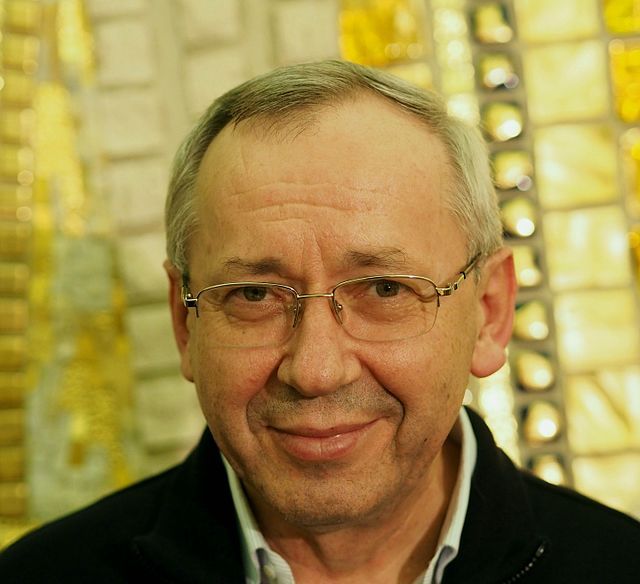
Rome Newsroom, Jan 24, 2023 / 10:47 am (CNA).
The Society of Jesus has asked Father Marko Rupnik to stay close to Rome as more alleged victims of the Jesuit priest and artist go public with their stories.
Father Johan Verschueren, SJ, this week told ACI Prensa, CNA’s Spanish-language news partner, that he had asked Rupnik “not to leave Lazio,” the Italian region where Rome is located.
Verschueren is the major superior for the international houses of the Jesuits. It is still unclear whether Verschueren or the superior general of the Jesuits, Father Arturo Sosa, is Rupnik’s direct superior.
Rupnik, originally from Slovenia, has been accused of the sexual, spiritual, and psychological abuse of women from a religious community with which he was formerly connected.
The abuse is alleged to have taken place in the late 1980s and early 1990s. An investigation into the claims was dropped by the Vatican in October 2022 due to the statute of limitations.
Responding to ACI Prensa by email, Verschueren said he asked the 68-year-old Rupnik to remain in Lazio “in order to be available for some ongoing preliminary inquiries” related to new information and new allegations the Jesuits have received.
In mid-December, the Jesuits said they had a few months prior set up a team of people to deal with abuse-related issues and asked victims of the priest to report abuse complaints to them.
At the beginning of January, the news site The Daily Compass reported that Rupnik was living in a monastery.
Asked on Jan. 23 where Rupnik was and if it was possible he was living outside of Italy, Verschueren said this “would surprise me greatly.”
Verschueren said the Jesuits may release further information about the new inquiries into Rupnik in February.
The first complaints against Rupnik became public in early December after Italian websites published stories with reports that Rupnik had abused consecrated women in the Loyola Community.
In a statement dated Dec. 2, 2022, the Jesuits said the order had put Rupnik under restrictions for a complaint received in 2021.
The Jesuits later confirmed that Rupnik had incurred excommunication “latae sententiae” for absolving an accomplice in confession of a sin against the Sixth Commandment. The excommunication was lifted by the Vatican in May 2020, the same month it had been officially declared.
In the nearly two months since then, reports of alleged abuse by Rupnik with then-young women under his spiritual guidance have continued to be published under aliases.
Italian newspaper Il Domani published Monday an interview with another alleged victim of Rupnik who shares that she was pressured by the priest to join the Loyola Community at the age of 23.
The woman shared explicit details of the sexual acts Rupnik subjected her to over several years in her early 20s and the spiritual manipulation and grooming behavior that started as early as her mid-teens.
The woman claimed that in 1988, one year after she entered the Loyola Community, she was sent by Rupnik to stay with another woman formerly connected to the community, then living in southern Italy, who touched her sexually in order to teach her how to engage in a “threesome.”
The alleged victim said she was so “blocked” and embarrassed that one evening the friend of Rupnik called him and told him that “there was nothing to do with me.”
From that point onward, she said, “Father Rupnik totally changed his attitude toward me and began to treat me very badly: I was exploited, ignored, and marginalized in the community.”
She said she left the community at the age of 35.
Until the end of December, Rupnik was listed as the leader of the Ignatian Spiritual Exercises in Loreto, Italy, in mid-February.
The leader of the Feb. 13–17 retreat for priests will now be Father Ivan Bresciani, SJ, also from Slovenia and the vice director of the Centro Aletti, an artistic and theological center in Rome founded by Rupnik.
Rupnik was removed as the director of the Centro Aletti in May 2020, according to the Jesuits.
Rupnik was the creator of the official image of the 2022 World Meeting of Families, and for more than 30 years he has designed mosaic artworks for chapels, churches, and shrines around the world, including inside the Vatican.
In March 2020, Rupnik preached the first Lenten sermon for the pope and the Roman Curia at the Vatican.
If you value the news and views Catholic World Report provides, please consider donating to support our efforts. Your contribution will help us continue to make CWR available to all readers worldwide for free, without a subscription. Thank you for your generosity!
Click here for more information on donating to CWR. Click here to sign up for our newsletter.





Leave a Reply